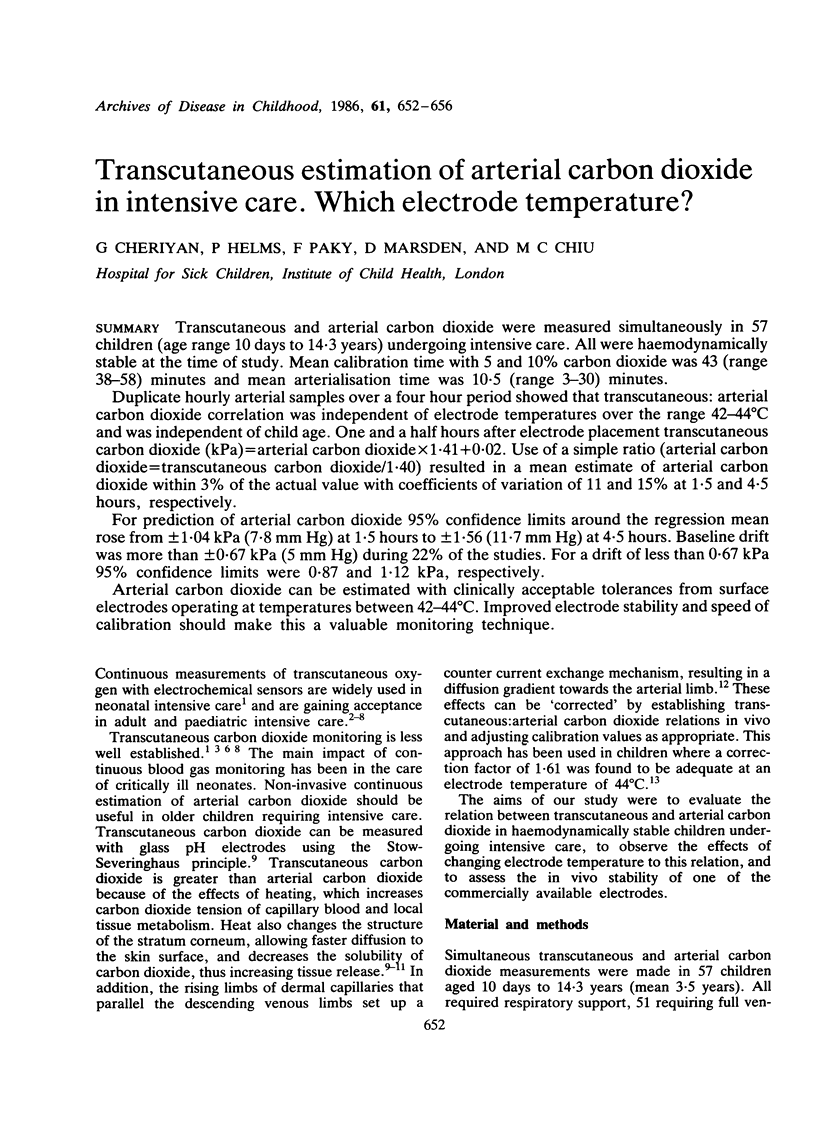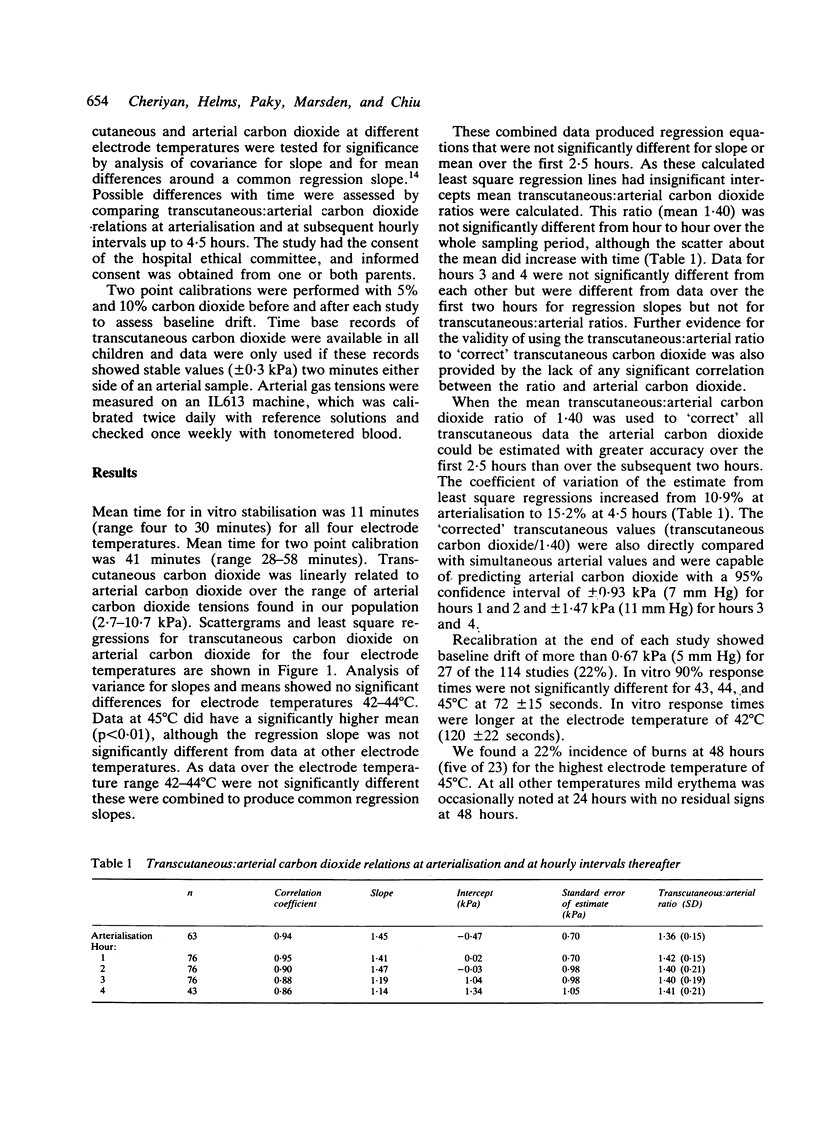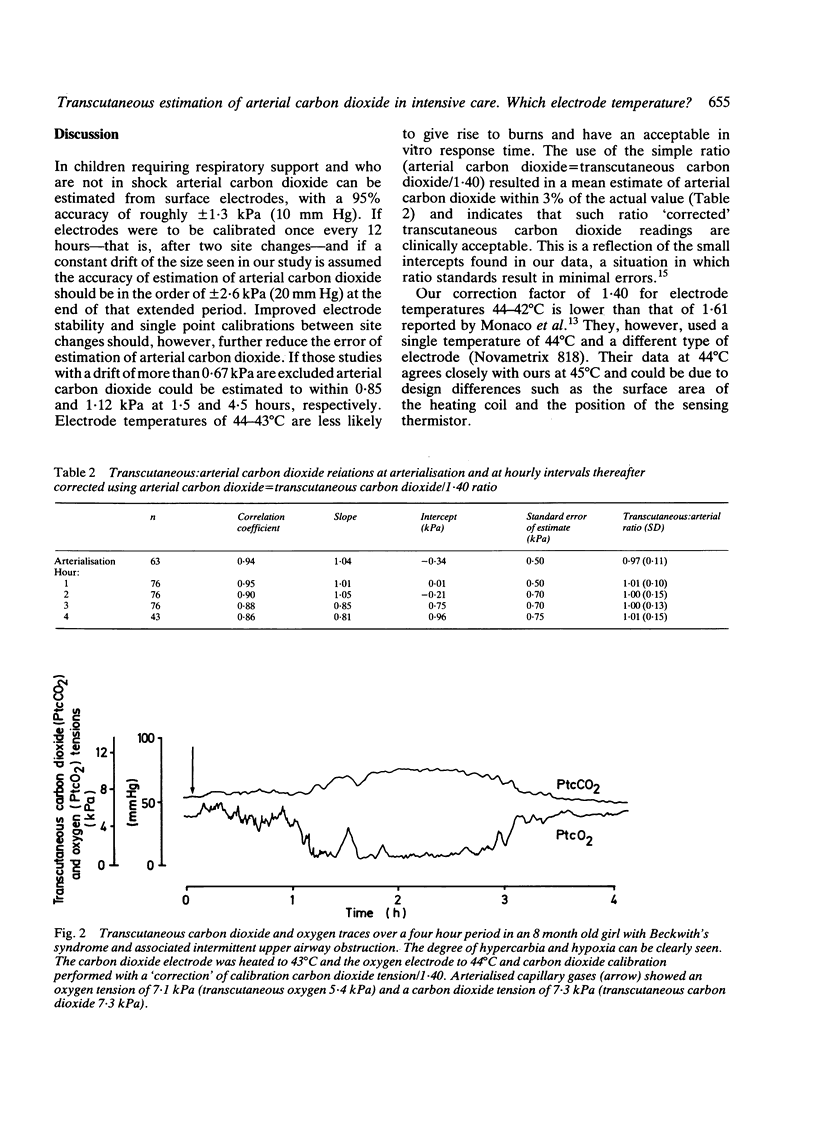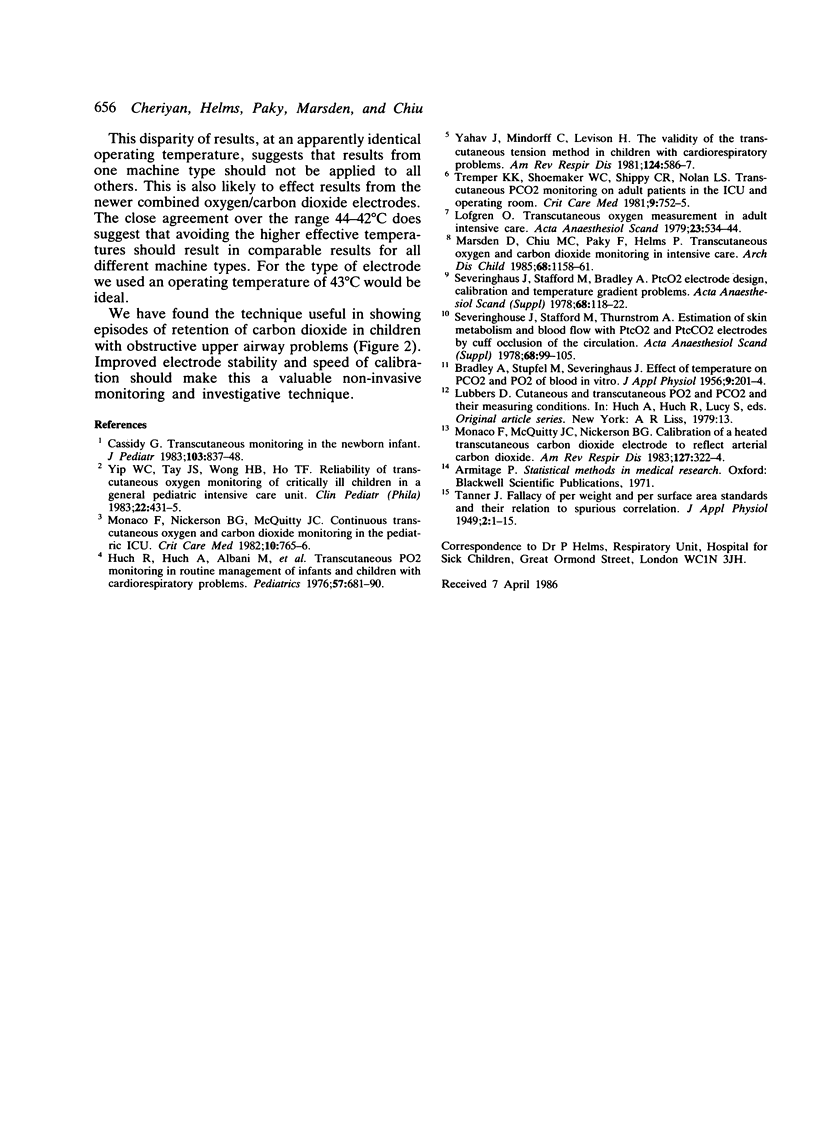Abstract
Transcutaneous and arterial carbon dioxide were measured simultaneously in 57 children (age range 10 days to 14.3 years) undergoing intensive care. All were haemodynamically stable at the time of study. Mean calibration time with 5 and 10% carbon dioxide was 43 (range 38-58) minutes and mean arterialisation time was 10.5 (range 3-30) minutes. Duplicate hourly arterial samples over a four hour period showed that transcutaneous: arterial carbon dioxide correlation was independent of electrode temperatures over the range 42-44 degrees C and was independent of child age. One and a half hours after electrode placement transcutaneous carbon dioxide (kPa) = arterial carbon dioxide X 1.41 + 0.02. Use of a simple ratio (arterial carbon dioxide = transcutaneous carbon dioxide/1.40) resulted in a mean estimate of arterial carbon dioxide within 3% of the actual value with coefficients of variation of 11 and 15% at 1.5 and 4.5 hours, respectively. For prediction of arterial carbon dioxide 95% confidence limits around the regression mean rose from +/- 1.04 kPa (7.8 mm Hg) at 1.5 hours to +/- 1.56 (11.7 mm Hg) at 4.5 hours. Baseline drift was more than +/- 0.67 kPa (5 mm Hg) during 22% of the studies. For a drift of less than 0.67 kPa 95% confidence limits were 0.87 and 1.12 kPa, respectively. Arterial carbon dioxide can be estimated with clinically acceptable tolerances from surface electrodes operating at temperatures between 42-44 degrees C. Improved electrode stability and speed of calibration should make this a valuable monitoring technique.
Full text
PDF




Selected References
These references are in PubMed. This may not be the complete list of references from this article.
- BRADLEY A. F., SEVERINGHAUS J. W., STUPFEL M. Effect of temperature on PCO2 and PO2 of blood in vitro. J Appl Physiol. 1956 Sep;9(2):201–204. doi: 10.1152/jappl.1956.9.2.201. [DOI] [PubMed] [Google Scholar]
- Cassady G. Transcutaneous monitoring in the newborn infant. J Pediatr. 1983 Dec;103(6):837–848. doi: 10.1016/s0022-3476(83)80698-2. [DOI] [PubMed] [Google Scholar]
- Huch R., Huch A., Albani M., Gabriel M., Schulte F. J., Wolf H., Rupprath G., Emmrich P., Stechele U., Duc G. Transcutaneous PO2 monitoring in routine management of infants and children with cardiorespiratory problems. Pediatrics. 1976 May;57(5):681–690. [PubMed] [Google Scholar]
- Löfgren O. Transcutaneous oxygen measurement in adult intensive care. Acta Anaesthesiol Scand. 1979 Dec;23(6):534–544. doi: 10.1111/j.1399-6576.1979.tb01484.x. [DOI] [PubMed] [Google Scholar]
- Marsden D., Chiu M. C., Paky F., Helms P. Transcutaneous oxygen and carbon dioxide monitoring in intensive care. Arch Dis Child. 1985 Dec;60(12):1158–1161. doi: 10.1136/adc.60.12.1158. [DOI] [PMC free article] [PubMed] [Google Scholar]
- Monaco F., McQuitty J. C., Nickerson B. G. Calibration of a heated transcutaneous carbon dioxide electrode to reflect arterial carbon dioxide. Am Rev Respir Dis. 1983 Mar;127(3):322–324. doi: 10.1164/arrd.1983.127.3.322. [DOI] [PubMed] [Google Scholar]
- Monaco F., Nickerson B. G., McQuitty J. C. Continuous transcutaneous oxygen and carbon dioxide monitoring in the pediatric ICU. Crit Care Med. 1982 Nov;10(11):765–766. doi: 10.1097/00003246-198211000-00014. [DOI] [PubMed] [Google Scholar]
- Severinghaus J. W., Stafford M., Bradley A. F. tcPCO2 electrode design, calibration and temperature gradient problems. Acta Anaesthesiol Scand Suppl. 1978;68:118–122. [PubMed] [Google Scholar]
- Tremper K. K., Shoemaker W. C., Shippy C. R., Nolan L. S. Transcutaneous PCO2 monitoring on adult patients in the ICU and the operating room. Crit Care Med. 1981 Oct;9(10):752–755. doi: 10.1097/00003246-198110000-00017. [DOI] [PubMed] [Google Scholar]
- Yahav J., Mindorff C., Levison H. The validity of the transcutaneous oxygen tension method in children with cardiorespiratory problems. Am Rev Respir Dis. 1981 Nov;124(5):586–587. doi: 10.1164/arrd.1981.124.5.586. [DOI] [PubMed] [Google Scholar]
- Yip W. C., Tay J. S., Wong H. B., Ho T. F. Reliability of transcutaneous oxygen monitoring of critically ill children in a general pediatric unit. Clin Pediatr (Phila) 1983 Jun;22(6):431–435. doi: 10.1177/000992288302200607. [DOI] [PubMed] [Google Scholar]


